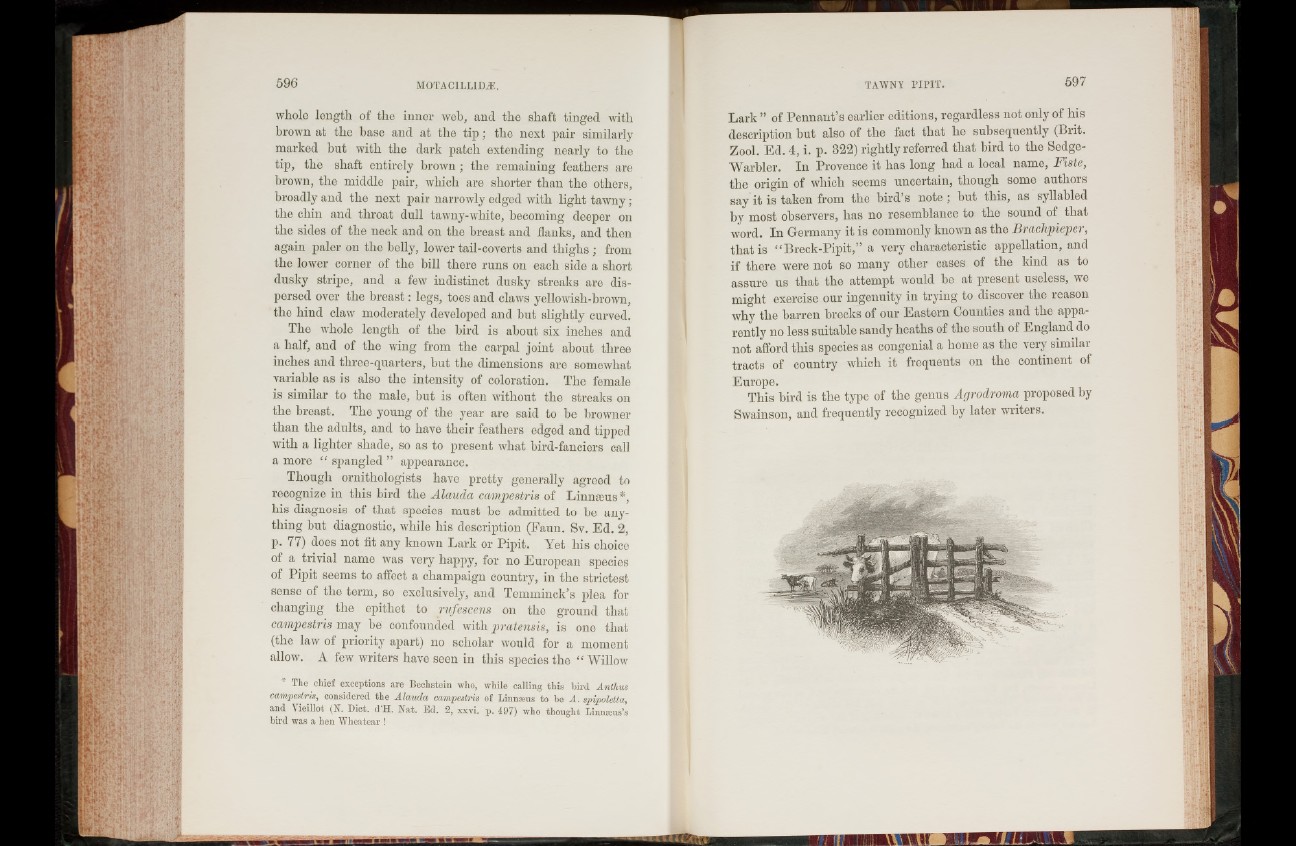
whole length ol the inner web, and the shaft tinged with
brown at the base and at the tip ; the next pair similarly
marked but with the dark patch extending nearly to the
tip, the shaft entirely brown; the remaining feathers are
brown, the middle pair, which are shorter than the others,
broadly and the next pair narrowly edged with light tawny;
the chin and throat dull tawny-white, becoming deeper on
the sides of the neck and 011 the breast and flanks, and then
again paler on the belly, lower tail-coverts and thighs ; from
the lower corner of the bill there runs on each side a short
dusky stripe, and a few indistinct dusky streaks are dispersed
over the b re a st: legs, toes and claws yellowish-brown,
the hind claw moderately developed and but slightly curved.
The whole length of the bird is about six inches and
a half, and of the wing from the carpal joint about three
inches and three-quarters, but the dimensions are somewhat
variable as is also the intensity of coloration. The female
is similar to the male, but is often without the streaks on
the breast. The young of the year are said to be browner
than the adults, and to have their feathers edged and tipped
with a lighter shade, so as to present what bird-fanciers call
a more “ spangled ” appearance.
Though ornithologists have pretty generally agreed to
recognize in this bird the Alauda campestris of Linmeus *,
his diagnosis of that species must be admitted to be anything
but diagnostic, while his description (Faun. Sv. Ed. 2,
p. 77) does not fit any known Lark or Pipit. Yet his choice
of a trivial name was very happy, for 110 European species
of Pipit seems to affect a champaign country, in the strictest
sense of the term, so exclusively, and Temminck’s plea for
changing the epithet to rufescens on the ground that
campestris may bo confounded with pratensis, is one that
(the law of priority apart) no scholar would for a moment
allow. A few writers have seen in this species the “ Willow
The chief exceptions are Bechstein who, while calling this bird Anthus
campestris, considered the Alauda campestris of Linnams to be A. spipoletta,
and \ ieillot (N. Diet, d H. Nat. Ed. 2, xxvi. p. 497) who thought Linnaeus’s
bird was a hen Wheatear !
Lark ” of Pennant’s earlier editions, regardless not only of his
description but also of the fact that he subsequently (Brit.
Zool. Ed. 4, i. p. 322) rightly referred that bird to the Sedge-
Warbler. In Provence it has long had a local name, Fiste,
the origin of which seems uncertain, though some authors
say it is taken from the bird’s note ; but this, as syllabled
by most observers, lias no resemblance to the sound of that
word. In Germany it is commonly known as the Brachpieper,
that is “ Breck-Pipit,” a very characteristic appellation, and
if there were not so many other cases of the kind as to
assure us that the attempt would be at present useless, we
might exercise our ingenuity in trying to discover the reason
why the barren brecks of our Eastern Counties and the apparently
no less suitable sandy heaths of the south of England do
not afford this species as congenial a home as the very similar
tracts of country which it frequents on the continent of
Europe.
This bird is the type of the genus Agrodroma proposed by
Swainson, and frequently recognized by later writers.